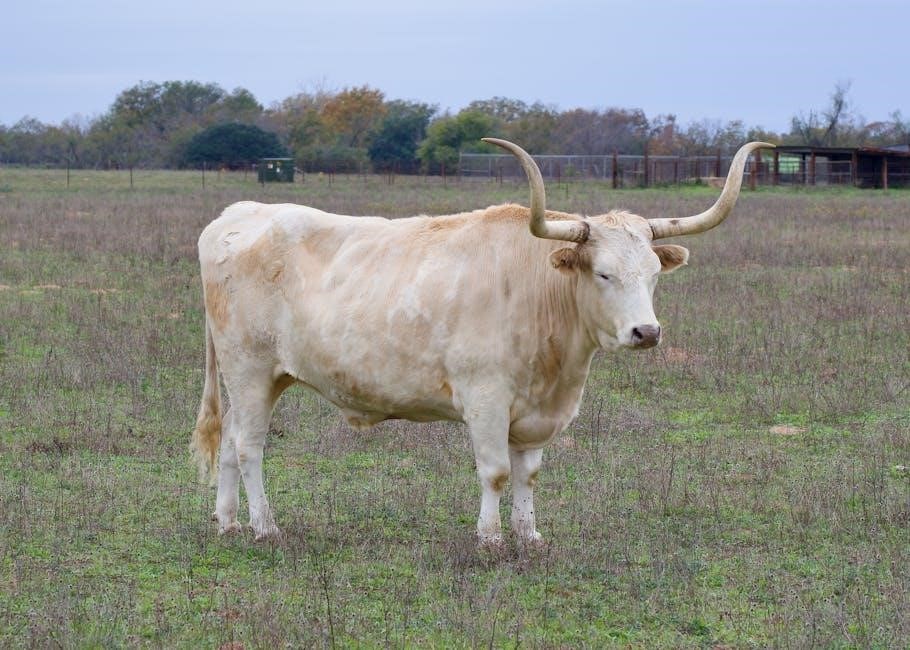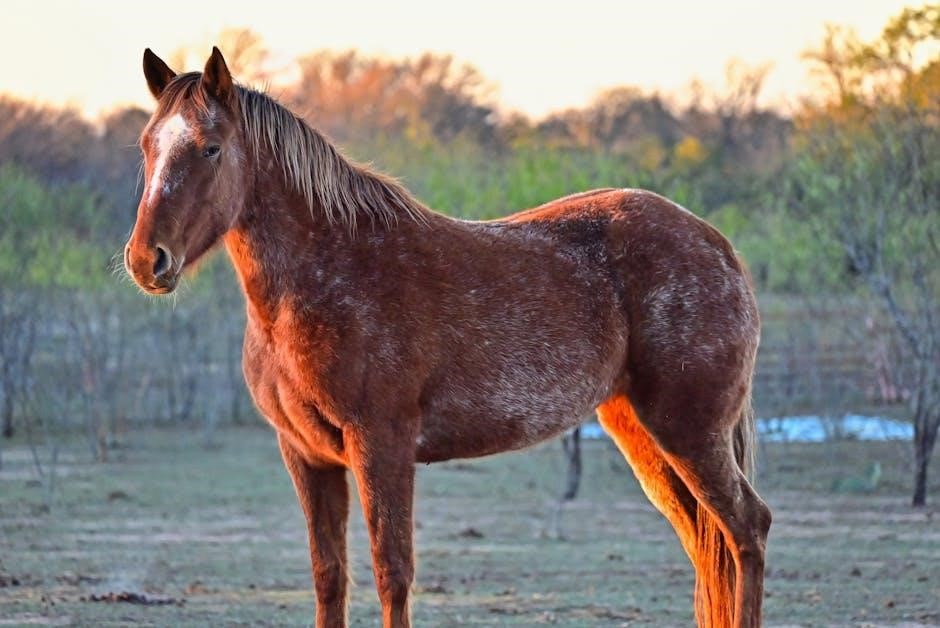texas snakes a field guide
Texas is home to a diverse range of snakes‚ both venomous and non-venomous‚ making it a fascinating region for herpetologists and nature enthusiasts. Texas Snakes: A Field Guide provides detailed insights into identifying species‚ understanding their habitats‚ and appreciating their ecological roles. With over 100 species documented‚ the guide offers high-quality images‚ descriptions‚ and a comprehensive checklist to aid in recognizing snakes encountered in the wild or backyard. This resource is essential for anyone seeking to learn about Texas’s serpent biodiversity and coexist safely with these creatures.
Overview of Snake Diversity in Texas
Texas boasts an impressive diversity of snakes‚ with over 115 species documented statewide. This diversity is attributed to the state’s vast geographical range‚ encompassing deserts‚ forests‚ grasslands‚ and wetlands. Among these‚ venomous species like rattlesnakes‚ copperheads‚ and coral snakes coexist with non-venomous counterparts such as bullsnakes‚ king snakes‚ and garter snakes. The varied habitats support a wide array of ecological adaptations‚ from burrowing to arboreal lifestyles. This rich diversity underscores the importance of field guides in identifying and understanding the unique characteristics of Texas’s serpent fauna‚ ensuring safe coexistence with these fascinating creatures.
Importance of a Field Guide for Identifying Snakes
A field guide is essential for accurately identifying Texas snakes‚ as it provides detailed descriptions‚ high-quality images‚ and habitat information. This tool helps distinguish venomous species‚ like rattlesnakes and coral snakes‚ from non-venomous ones‚ ensuring safety and informed decision-making. By educating users about snake behaviors‚ habitats‚ and characteristics‚ a field guide fosters a deeper understanding of these creatures and their ecological roles. It also reduces fear and promotes coexistence by empowering individuals to identify species confidently‚ whether in the wild or their backyard.
Categories of Snakes Found in Texas
Texas is home to a wide variety of snakes‚ categorized into venomous and non-venomous species. These categories help in understanding their behaviors‚ habitats‚ and unique characteristics effectively.
Venomous Snakes of Texas
Texas is home to several venomous snake species‚ including coral snakes‚ copperheads‚ cottonmouths (water moccasins)‚ and rattlesnakes. These snakes pose a threat to humans and animals due to their potent venom. Coral snakes are known for their vibrant color patterns‚ while copperheads are often found in central Texas. Cottonmouths thrive in aquatic environments‚ and rattlesnakes are identifiable by their distinctive rattle. Understanding their habitats and behaviors is crucial for safe coexistence. Field guides provide detailed information to help identify and avoid these dangerous species effectively.
Non-Venomous Snakes of Texas
Texas hosts a wide variety of non-venomous snakes‚ including bullsnakes‚ gopher snakes‚ kingsnakes‚ and water snakes. These species play a vital ecological role by controlling pest populations. Many non-venomous snakes‚ like the harmless plains blind snake‚ are often mistaken for venomous ones due to similar appearances. Field guides are essential for accurate identification‚ as they provide detailed descriptions of color patterns‚ scale textures‚ and habitat preferences. Understanding these species helps in appreciating their importance in maintaining the balance of Texas’s diverse ecosystems while ensuring safe human-snake coexistence.

Snake Identification Tips
Use a field guide to identify Texas snakes by observing head shape‚ pupil type‚ and color patterns. These features help distinguish venomous from non-venomous species effectively.
Physical Characteristics for Easy Identification
Identifying Texas snakes often begins with physical traits like head shape‚ pupil type‚ and color patterns. Venomous snakes‚ such as coral snakes‚ copperheads‚ and rattlesnakes‚ often exhibit distinctive markings or features. Coral snakes are recognized by their bright‚ alternating bands‚ while rattlesnakes have a noticeable rattle on their tail. Non-venomous species‚ like bullsnakes‚ may mimic venomous snakes but lack key features. Observing scale texture‚ coloration‚ and body shape can also aid in accurate identification. These physical characteristics are essential for distinguishing between species and ensuring safe interactions.
Behavioral Traits for Differentiating Species
Behavioral traits are crucial for identifying Texas snakes. Venomous species like rattlesnakes exhibit defensive behaviors such as tail rattling when threatened. Copperheads and cottonmouths display specific postures when alarmed‚ while non-venomous snakes like bullsnakes may vibrate their tails or flatten their heads to mimic venomous species. Understanding these behaviors helps differentiate between dangerous and harmless snakes‚ aiding in safe interactions and accurate identification. Observing how a snake reacts to its environment can provide key insights into its species and potential threat level.

Habitat and Distribution
Texas snakes inhabit diverse environments‚ from forests to deserts‚ with species distribution varying across the state’s regions‚ reflecting adaptation to different ecological conditions and geographical landscapes.
Common Habitats for Texas Snakes
Texas snakes occupy diverse habitats‚ including forests‚ grasslands‚ deserts‚ and wetlands. Coral snakes thrive in forests and woodlands‚ while copperheads prefer rocky‚ wooded areas. Aquatic species like water moccasins inhabit swamps and rivers. Desert-dwelling snakes‚ such as sidewinders‚ burrow into sandy terrains. Rattlesnakes are often found in rocky outcrops and canyons. Urban and suburban areas host non-venomous species like garter snakes. Each habitat supports unique snake populations‚ reflecting their adaptability to Texas’s varied ecosystems.
Geographical Distribution Across Texas

Texas’s vast and varied landscapes support a wide range of snake species across its regions. Eastern Texas‚ with its moist forests‚ is home to species like the copperhead and cottonmouth. The arid west hosts rattlesnakes‚ while the southern regions shelter coral snakes and indigo snakes. Central Texas sees a mix of both terrestrial and aquatic species. This geographical diversity allows Texas to harbor over 100 snake species‚ making it a hotspot for herpetological study and exploration. Each region’s unique environment supports distinct snake populations‚ highlighting the state’s rich biodiversity.

Snake Behavior and Life Cycle
Snakes in Texas exhibit diverse behaviors‚ from ambush predation to active hunting. Their life cycles vary‚ with species showing differences in feeding strategies‚ reproduction‚ and growth patterns.
Hunting and Feeding Habits
Snakes in Texas exhibit varied hunting strategies‚ ranging from ambush predation to active pursuit. Venomous species‚ like rattlesnakes‚ use venom to immobilize prey‚ while non-venomous snakes‚ such as king snakes‚ feed on other snakes. Garter snakes often hunt near water‚ targeting aquatic prey. Many species are constrictors‚ wrapping around prey to suffocate it before consumption. These feeding habits highlight the ecological roles of snakes‚ maintaining balance in Texas ecosystems by controlling small animal populations.
Reproduction and Growth Patterns
Texas snakes exhibit diverse reproductive strategies‚ with many species laying eggs‚ while others give live birth. First-year snakes often use smaller rocks for shelter‚ transitioning to larger rocks as they mature. Growth patterns vary‚ with some species maturing quickly‚ while others take years. Reproduction typically occurs in spring‚ with females guarding nests until eggs hatch. Understanding these patterns helps in appreciating the life cycle of Texas snakes and their ecological roles in maintaining balance within the environment.

Safety and First Aid
Stay calm if bitten‚ avoid movement‚ and seek medical help immediately. Never provoke snakes‚ and wear protective footwear in snake-prone areas to minimize risks.
Preventive Measures to Avoid Snake Bites
Stay calm and aware when in snake-prone areas like trails or rocky terrains. Avoid tall grass and wear long pants‚ boots‚ and gloves for protection. Never reach into dark or hidden spaces without inspection. Use a stick to thump the ground ahead to alert snakes of your presence. Avoid running or sudden movements‚ especially with headphones. Keep pets on a leash and educate children about snake safety. Leave snakes alone if encountered‚ as most bites occur during provocation. These precautions reduce the risk of encounters and promote peaceful coexistence with Texas’s serpent population.
Emergency Response to Snake Bites
Stay calm and still to slow venom spread. Remove tight clothing or jewelry near the bite. Do not apply tourniquets or suck venom. Keep the affected limb immobilized and below heart level. Do not ice the area. Immediately seek medical attention; delays can worsen outcomes. Carry a first aid guide and know emergency contacts. Prompt professional treatment is crucial for venomous bites‚ as it reduces mortality and long-term damage. Remember‚ timely medical care is the most effective response to snake bites in Texas.
Conservation Efforts
Conservation efforts protect Texas snake populations by preserving habitats and educating communities about their ecological importance. Habitat preservation programs and public awareness campaigns help maintain biodiversity and ecological balance.
Role of Snakes in the Ecosystem
Snakes play a vital role in maintaining ecological balance by controlling populations of small mammals‚ insects‚ and other invertebrates. They serve as both predators and prey‚ supporting biodiversity. Many species‚ like the garter snake‚ prey on invertebrates‚ preventing pest infestations. Additionally‚ king snakes help regulate venomous snake populations by preying on them. This natural predation ensures healthy ecosystems‚ benefiting agriculture and wildlife alike.

Current Conservation Initiatives in Texas
Texas is actively engaged in protecting its snake populations through various conservation initiatives. The Texas Parks and Wildlife Department collaborates with herpetologists to monitor species health and habitats. Programs focus on preserving natural ecosystems‚ mitigating habitat loss‚ and addressing climate change impacts. Public education campaigns aim to reduce snake-human conflicts and promote coexistence. Additionally‚ research initiatives study venomous and non-venomous species to inform effective conservation strategies. These efforts ensure the survival of Texas’s diverse snake species‚ maintaining ecological balance and biodiversity across the state.
Resources for Further Learning
Explore Texas Snakes: A Field Guide for detailed species profiles and images. Additional resources include herpetology books‚ online forums‚ and wildlife conservation websites for deeper understanding and engagement.
Recommended Books and Guides
For in-depth knowledge‚ Texas Snakes: A Field Guide by Dixon and Weller is a top recommendation. It features detailed descriptions‚ high-quality images‚ and habitat information for all species. Another excellent resource is A Field Guide to the Reptiles and Amphibians of Texas‚ offering comprehensive coverage of the state’s herpetofauna. Online forums like r/herpetology and the Texas Herpetological Society provide community-driven insights and updates. These resources are invaluable for researchers‚ enthusiasts‚ and educators seeking to understand Texas’s diverse snake population.
Online Communities and Forums
Online platforms like r/herpetology and the Texas Herpetological Society offer valuable resources for snake enthusiasts. These forums provide opportunities to share experiences‚ ask questions‚ and learn from experts. Members often post photos and descriptions of snakes they’ve encountered‚ fostering a collaborative environment for identification and education. Additionally‚ these communities share updates on conservation efforts and recent research‚ making them indispensable for staying informed about Texas snakes. Engaging with online forums can enhance your understanding and appreciation of these fascinating creatures.
